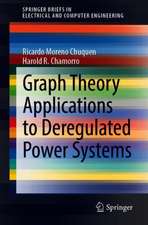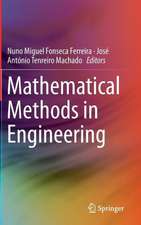Wave Pipelining: Theory and CMOS Implementation: The Springer International Series in Engineering and Computer Science, cartea 248
Autor C. Thomas Gray, Wentai Liu, Ralph K. Cavin, IIIen Limba Engleză Hardback – 30 noi 1993
| Toate formatele și edițiile | Preț | Express |
|---|---|---|
| Paperback (1) | 941.38 lei 6-8 săpt. | |
| Springer Us – 27 sep 2012 | 941.38 lei 6-8 săpt. | |
| Hardback (1) | 947.35 lei 6-8 săpt. | |
| Springer Us – 30 noi 1993 | 947.35 lei 6-8 săpt. |
Din seria The Springer International Series in Engineering and Computer Science
- 24%
 Preț: 1041.98 lei
Preț: 1041.98 lei - 20%
 Preț: 643.50 lei
Preț: 643.50 lei - 18%
 Preț: 1225.62 lei
Preț: 1225.62 lei - 18%
 Preț: 965.02 lei
Preț: 965.02 lei - 20%
 Preț: 646.12 lei
Preț: 646.12 lei - 18%
 Preț: 948.79 lei
Preț: 948.79 lei - 20%
 Preț: 646.62 lei
Preț: 646.62 lei - 15%
 Preț: 637.46 lei
Preț: 637.46 lei - 20%
 Preț: 643.83 lei
Preț: 643.83 lei - 18%
 Preț: 949.23 lei
Preț: 949.23 lei - 20%
 Preț: 644.48 lei
Preț: 644.48 lei - 20%
 Preț: 994.92 lei
Preț: 994.92 lei - 20%
 Preț: 645.97 lei
Preț: 645.97 lei - 18%
 Preț: 946.87 lei
Preț: 946.87 lei - 20%
 Preț: 995.57 lei
Preț: 995.57 lei - 18%
 Preț: 956.99 lei
Preț: 956.99 lei - 20%
 Preț: 644.98 lei
Preț: 644.98 lei - 15%
 Preț: 649.54 lei
Preț: 649.54 lei - 18%
 Preț: 950.21 lei
Preț: 950.21 lei - 18%
 Preț: 1221.38 lei
Preț: 1221.38 lei - 18%
 Preț: 957.62 lei
Preț: 957.62 lei - 15%
 Preț: 643.99 lei
Preț: 643.99 lei - 18%
 Preț: 948.47 lei
Preț: 948.47 lei - 18%
 Preț: 947.35 lei
Preț: 947.35 lei - 20%
 Preț: 1284.65 lei
Preț: 1284.65 lei - 20%
 Preț: 1628.31 lei
Preț: 1628.31 lei - 20%
 Preț: 1285.78 lei
Preț: 1285.78 lei
Preț: 947.35 lei
Preț vechi: 1155.30 lei
-18% Nou
Puncte Express: 1421
Preț estimativ în valută:
181.30€ • 188.58$ • 149.67£
181.30€ • 188.58$ • 149.67£
Carte tipărită la comandă
Livrare economică 14-28 aprilie
Preluare comenzi: 021 569.72.76
Specificații
ISBN-13: 9780792393986
ISBN-10: 0792393988
Pagini: 206
Ilustrații: XVIII, 206 p.
Dimensiuni: 155 x 235 x 14 mm
Greutate: 0.5 kg
Ediția:1994
Editura: Springer Us
Colecția Springer
Seria The Springer International Series in Engineering and Computer Science
Locul publicării:New York, NY, United States
ISBN-10: 0792393988
Pagini: 206
Ilustrații: XVIII, 206 p.
Dimensiuni: 155 x 235 x 14 mm
Greutate: 0.5 kg
Ediția:1994
Editura: Springer Us
Colecția Springer
Seria The Springer International Series in Engineering and Computer Science
Locul publicării:New York, NY, United States
Public țintă
ResearchCuprins
1 Introduction and Motivation.- 1.1 Wave Pipelining.- 1.2 History.- 1.3 Designing Wave Pipelined Circuits.- 1.4 Organization.- 2 Clock Period Constraints: Single Stage Systems.- 2.1 Introduction.- 2.2 System Model.- 2.3 Constraints for Correct Clocking.- 2.4 Minimizing the Clock Period.- 2.5 The Parameter k.- 2.6 Special Cases.- 2.7 Conclusions.- 3 Clock Period Constraints: Multiple Stage Systems.- 3.1 Introduction.- 3.2 System Model.- 3.3 Constraints for Correct Clocking.- 3.4 Example.- 3.5 Conclusions.- 4 Exact Timing Analysis.- 4.1 Introduction.- 4.2 Motivation and Justification.- 4.3 Complexity of Problem.- 4.4 Notation and Model.- 4.5 Basic Algorithm Development.- 4.6 Conclusion.- 5 Exact Timing Analysis: Algorithm.- 5.1 Introduction.- 5.2 Algorithm Strategy.- 5.3 Calculation of Output Responses.- 5.4 Verification of Output Responses.- 5.5 Detection of Components.- 5.6 Vector Reporting.- 5.7 Implementation.- 5.8 Limitations and Extensions.- 5.9 Conclusion.- 6 Practical Considerations in Wave Pipelining.- 6.1 Architecture Choice.- 6.2 Path Delay Variation.- 6.3 Circuit Choice.- 6.4 Parametric Variations due to Manufacturing and Environmen-tal Factors.- 6.5 Clock Distribution and Physical Layout.- 6.6 Technology Scaling.- 6.7 Conclusion.- 7 Design Examples.- 7.1 Introduction.- 7.2 Parallel-Carry Adder.- 7.3 Sampler.- 7.4 Conclusion.- 8 Conclusions.- A Example Model File.- B Calculation of Tolerance of Parametric Variations.- References.
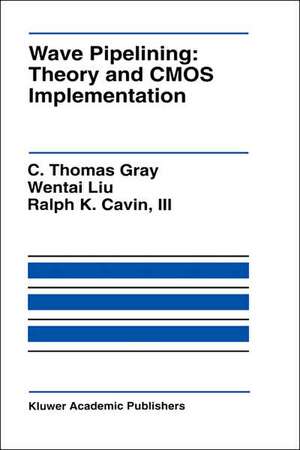

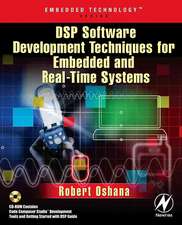





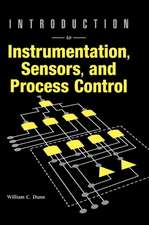
![Principles of GNSS, Inertial, and Multisensor Integrated Navigation Systems [With DVD]: Volume 2](https://i0.books-express.ro/bt/9781608070053/principles-of-gnss-inertial-and-multisensor-integrated-navigation-systems-with-dvd.jpg)





